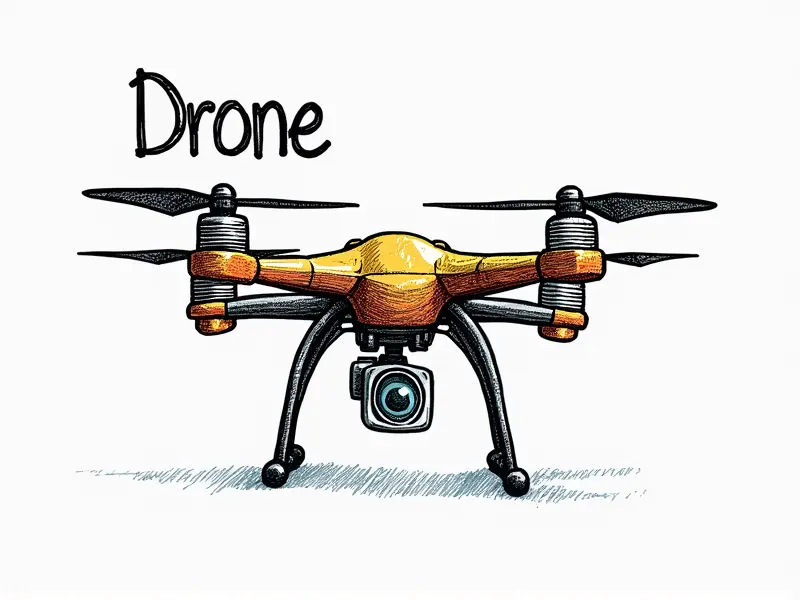Battery capacity?

Maximizing RC Drone Battery Life Tips
When it comes to RC drones, battery life is a critical factor that can make or break your flying experience. Maximizing the flight time of your drone requires careful consideration of several factors:
- Battery Type: Lithium Polymer (LiPo) batteries are commonly used due to their high energy density and lightweight construction.
- Capacity Selection: Choose a battery with the highest capacity that your drone can safely accommodate. A higher mAh rating generally means longer flight times.
- Maintain Optimal Voltage: Ensure your batteries are charged to their optimal voltage levels before each flight to maximize performance and longevity.
Best Batteries for Long Flight Times
To achieve extended flight durations, it's essential to select the right battery type. Here are some of the best options:
- Lithium Polymer (LiPo): These batteries offer high energy density and a low discharge rate, making them ideal for long flights.
- Nickel-Metal Hydride (NiMH): While not as common in RC drones, NiMH batteries can provide good performance with longer cycle life.
- Lithium-Ion (Li-ion): These batteries are lighter and more efficient than traditional lead-acid batteries, offering better flight times.
Understanding mAh in RC Aircraft Batteries
The capacity of an RC aircraft battery is typically measured in milliampere-hours (mAh). This rating indicates how much charge the battery can store and deliver over a specific period. For example, a 3000mAh battery can supply 3 amps for one hour or 1 amp for three hours.
Higher mAh ratings generally mean longer flight times but also heavier batteries. It's crucial to balance capacity with weight to ensure optimal performance.
Choosing the Right Battery for FPV Racing
Selecting the right battery for First-Person View (FPV) racing involves considering several factors:
- Cycle Life: Choose batteries that can withstand frequent charging and discharging without losing capacity.
- Discharge Rate: High-discharge rate batteries are essential for FPV racing to ensure consistent power delivery during high-speed maneuvers.
- Weight: Lighter batteries provide better performance by reducing the overall weight of your drone, improving maneuverability and speed.
Common Battery Issues in RC Planes and Helis
Batteries can face various issues that affect their performance and longevity. Some common problems include:
- Sulfation: This occurs when lead-acid batteries are not fully charged, leading to reduced capacity.
- Overcharging: Overcharging can damage the battery's internal structure and reduce its lifespan.
- Temperature Sensitivity: Extreme temperatures can degrade battery performance and shorten their life.
High-Capacity Batteries for Extended Flight Times
To extend your RC plane or helicopter's flight time, consider using high-capacity batteries. High mAh ratings are key to achieving longer flights:
- Battery Capacity: Opt for batteries with higher capacity ratings within the weight limits of your aircraft.
- Balancing Packs: Use balanced packs that ensure all cells in a multi-cell battery receive equal charge and discharge rates.
- Temperature Management: Keep batteries at optimal temperatures to maximize their efficiency during flights.
Boost Your Quadcopter's Endurance with These Tips
To enhance the flight endurance of your quadcopter, follow these tips:
- Select Efficient Motors: Use motors that offer high thrust-to-weight ratios for better performance.
- Optimize Propellers: Choose propellers designed to work efficiently with your motor and battery setup.
- Battery Management Systems (BMS): Utilize BMS technology to monitor and regulate voltage levels, ensuring optimal battery usage.
Optimal Battery Selection for RC Airplanes
Selecting the right battery is crucial for achieving optimal performance in RC airplanes. Key factors include:
- Battery Capacity: Choose a capacity that provides enough power without adding excessive weight.
- Voltage Requirements: Ensure your selected battery matches the voltage requirements of your airplane's motor and ESC (Electronic Speed Controller).
- Discharge Rate: Select batteries with appropriate discharge rates to handle high current demands during flight maneuvers.
RC Helicopter Battery Tips and Tricks
To get the most out of your RC helicopter's battery, follow these tips:
- Battery Placement: Position batteries strategically within the helicopter to maintain balance and stability during flight.
- Maintain Clean Connections: Regularly clean battery terminals to ensure reliable electrical connections.
- Monitor Battery Health: Keep track of your battery's performance over time to detect any signs of degradation early on.
Extend Flight Time with Better Batteries
To extend flight times, invest in quality batteries designed for extended use. Here are some strategies:
- Select High-Quality Brands: Opt for reputable brands known for their reliable and durable battery products.
- Battery Cycles: Prioritize batteries that can withstand high cycle counts without significant performance degradation.
- Temperature Control: Implement temperature control measures to maintain optimal operating conditions, especially in extreme weather.
Impact of Battery Capacity on RC Performance
The capacity of your battery directly influences the overall performance and flight duration of your RC aircraft. Higher-capacity batteries allow for longer flights but may add weight, affecting maneuverability and speed. Balancing these factors is crucial to achieving optimal performance.
Conclusion
In summary, optimizing battery life and selecting the right type of battery are essential components in enhancing the flight experience of your RC drone or aircraft. By understanding mAh ratings, choosing high-capacity batteries, managing temperature, and maintaining clean connections, you can significantly extend flight times and improve overall performance.

